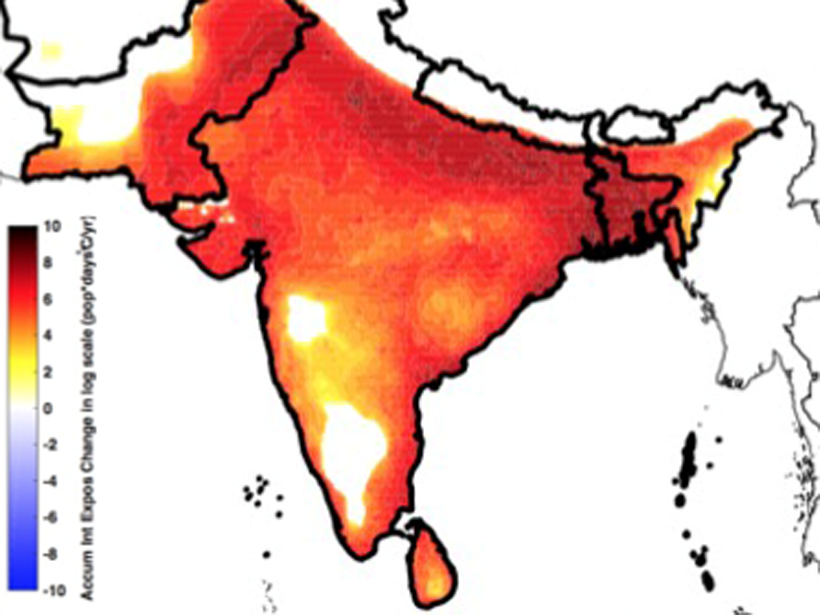Source: AGU Advances
Rising global temperatures and, correspondingly, increasing incidences of extreme heat events are occurring across most of the world. This is even more concerning in South Asia with many other geographical factors leading to prolonged period of hazardous weather. The examination of potential health exposure by Xu et al. [2020] is unique. The researchers studied projections for heat events in combination with one aspect of air quality—particulate matter—for the current and projected climate of India and a few other countries in South Asia.
The authors show that such jointed events would increase by 175% in frequency by mid-century. The fraction of land exposed to prolonged high particulate pollution increases by more than a factor of ten in 2050. The alarming increases in health exposures over just a few decades in South Asia pose great challenges to adaptation. Action addressing the combined impacts of climate change is needed across the world.
Citation: Xu, Y., Wu, X., Kumar, R., Barth, M., Diao, C., Gao, M., et al. [2020]. Substantial increase in the joint occurrence and human exposure of heatwave and high‐PM hazards over South Asia in the mid‐21st century. AGU Advances, 1, e2019AV000103. https://doi.org/10.1029/2019AV000103
—Donald Wuebbles, Editor, AGU Advances
Text © 2020. The authors. CC BY-NC-ND 3.0
Except where otherwise noted, images are subject to copyright. Any reuse without express permission from the copyright owner is prohibited.

